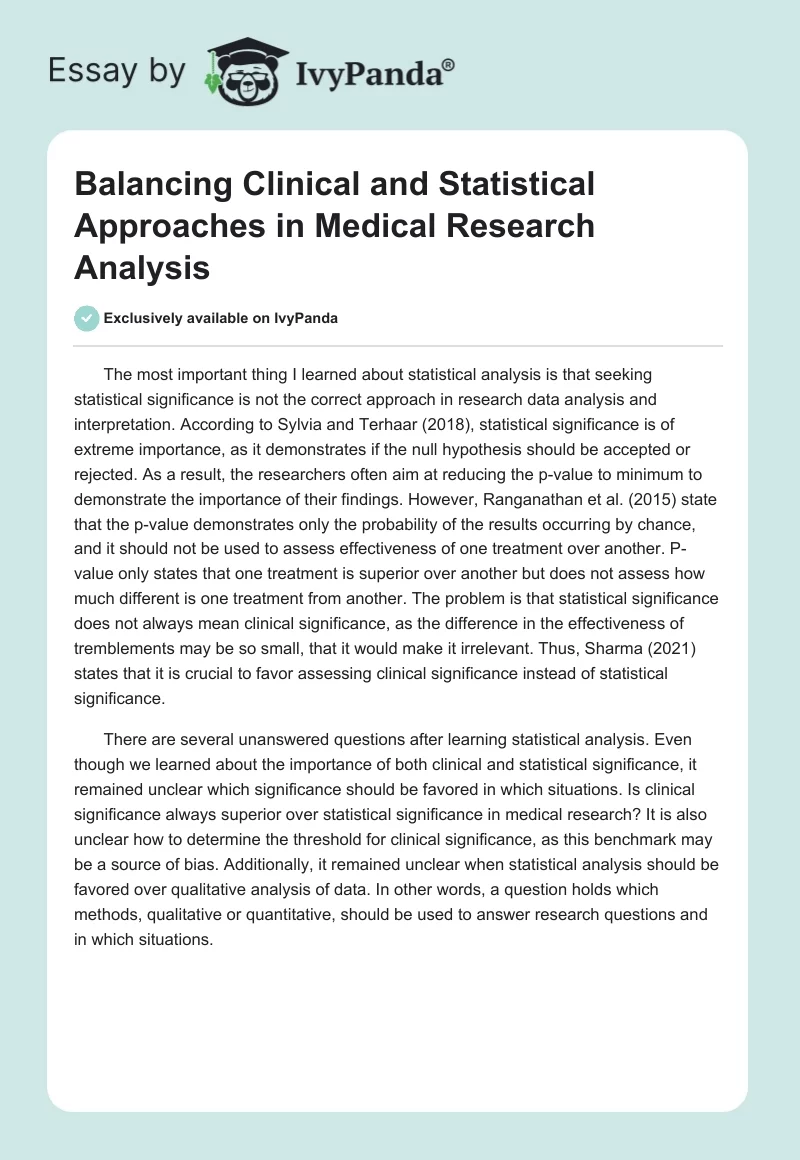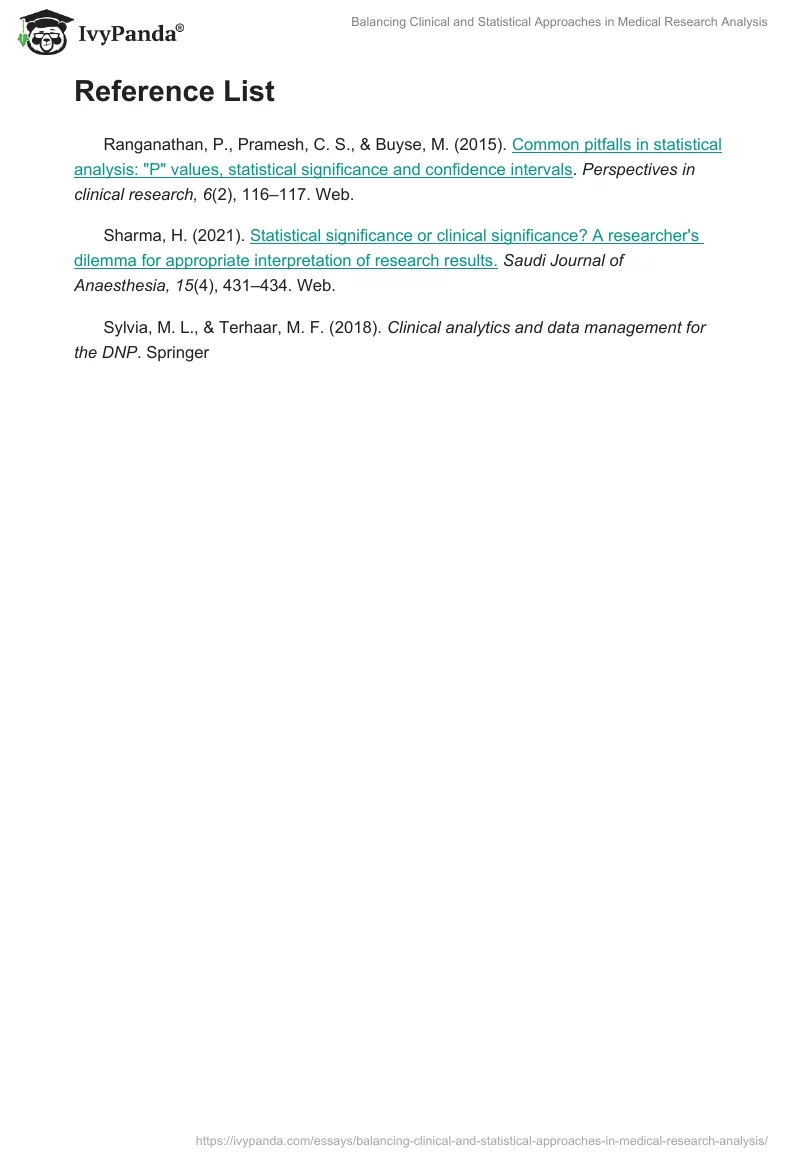The most important thing I learned about statistical analysis is that seeking statistical significance is not the correct approach in research data analysis and interpretation. According to Sylvia and Terhaar (2018), statistical significance is of extreme importance, as it demonstrates if the null hypothesis should be accepted or rejected. As a result, the researchers often aim at reducing the p-value to minimum to demonstrate the importance of their findings. However, Ranganathan et al. (2015) state that the p-value demonstrates only the probability of the results occurring by chance, and it should not be used to assess effectiveness of one treatment over another. P-value only states that one treatment is superior over another but does not assess how much different is one treatment from another. The problem is that statistical significance does not always mean clinical significance, as the difference in the effectiveness of tremblements may be so small, that it would make it irrelevant. Thus, Sharma (2021) states that it is crucial to favor assessing clinical significance instead of statistical significance.
There are several unanswered questions after learning statistical analysis. Even though we learned about the importance of both clinical and statistical significance, it remained unclear which significance should be favored in which situations. Is clinical significance always superior over statistical significance in medical research? It is also unclear how to determine the threshold for clinical significance, as this benchmark may be a source of bias. Additionally, it remained unclear when statistical analysis should be favored over qualitative analysis of data. In other words, a question holds which methods, qualitative or quantitative, should be used to answer research questions and in which situations.
Reference List
Ranganathan, P., Pramesh, C. S., & Buyse, M. (2015). Common pitfalls in statistical analysis: “P” values, statistical significance and confidence intervals. Perspectives in clinical research, 6(2), 116–117. Web.
Sharma, H. (2021). Statistical significance or clinical significance? A researcher’s dilemma for appropriate interpretation of research results.Saudi Journal of Anaesthesia, 15(4), 431–434. Web.
Sylvia, M. L., & Terhaar, M. F. (2018). Clinical analytics and data management for the DNP. Springer


